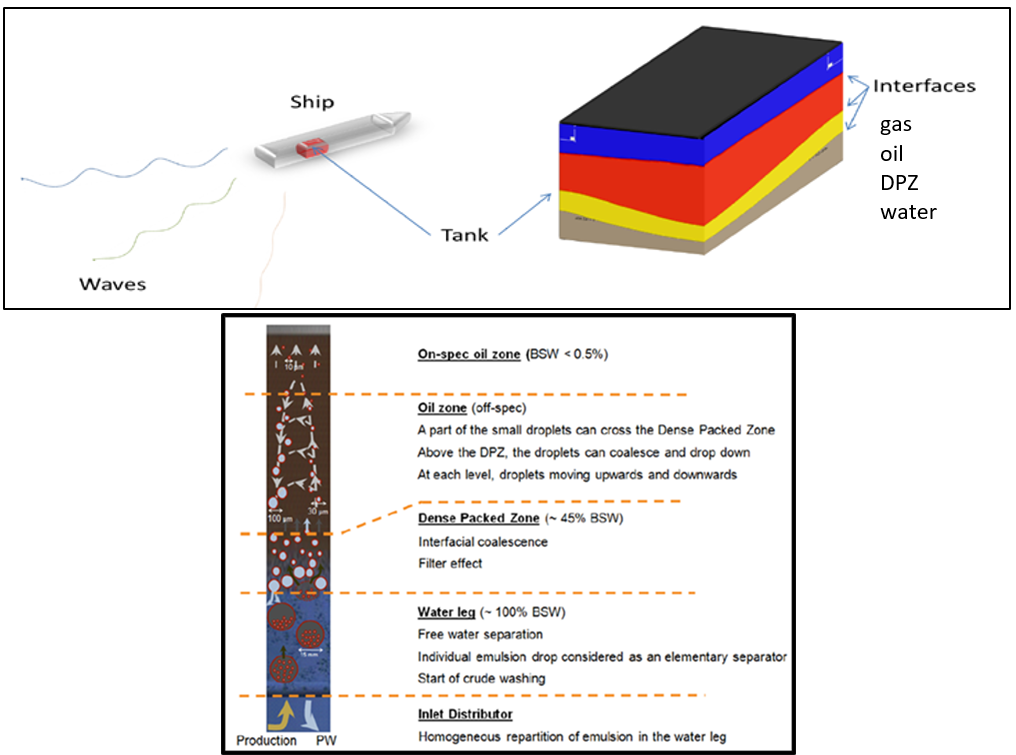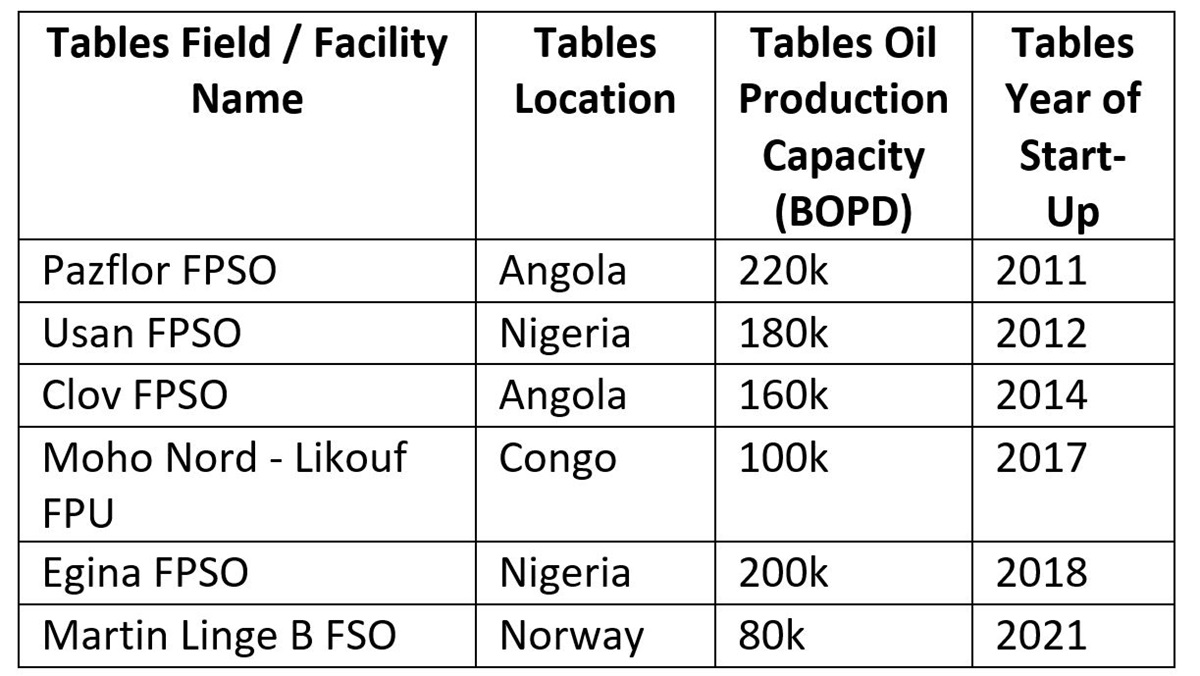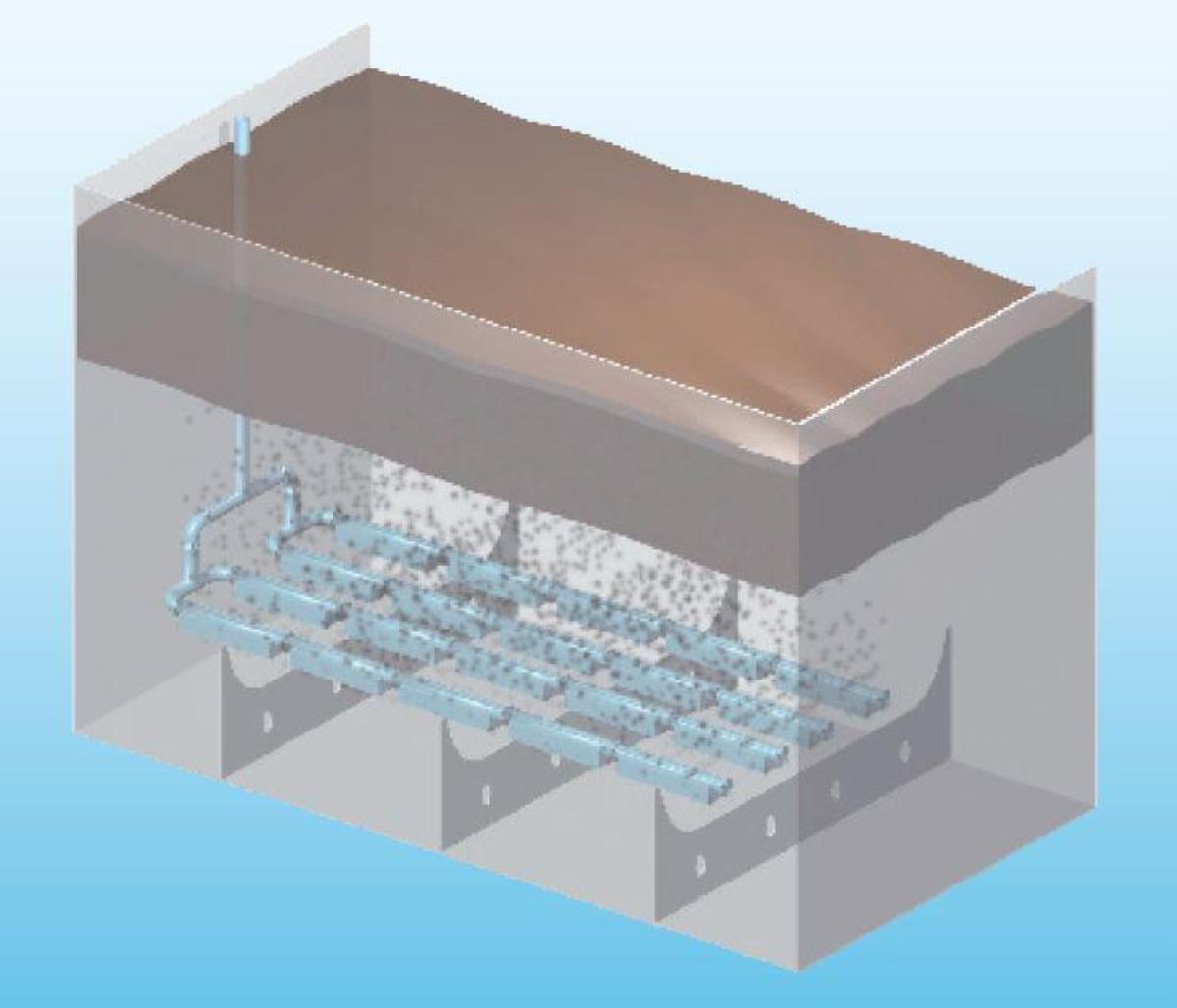- Field-proven separation efficiency in 5 systems in operation, meeting all industry standards including water-in-oil and salt-in-oil
- Reduced topsides weight, CAPEX and complexity through significant minimization of topsides processing equipment, including reduced number of separators and elimination of electrostatic coalescers (dehydrators & desalters) and associated heat exchangers
- Robust performance through more flexibility towards flow rate variations and potential future capacity increases
- Mitigation of risks associated with naphthenate formation (emulsion stabilization, deposits accumulation)
- Improved energy efficiency and lower OPEX through reduction of utility consumptions (heating, cooling and electrical loads)
- Improved safety through a more aerated layout of the FPSO topsides
Wash tank oil processing system
Reduced CAPEX and topsides complexity by optimizing the water-from-oil separation process in floating facilities
- Floating facilities for oil processing, including FPSO (floating production, storage & offloading), FSO (floating storage & offloading) and FPU (floating production unit)
- Designed for custom-designed newbuild vessels as well as converted tankers
- Resolve potential operational problems such as
- Poor oil/water separation efficiency in production separators
- Short-circuiting between electrodes in the electrostatic coalescers/dehydrators
- Naphtenate deposits
Photo gallery
The technology involves a significant simplification of the topsides crude oil process as part thereof is relocated to specifically designed hull tanks while eliminating the need for electrostatic coalescers and/or desalters.
As a result, this technology reduces the topsides oil processing system weight, complexity and CAPEX. Sulzer’s patented inlet distributors and static mixers are key building blocks to achieve the performance required. Since this key equipment is installed on a floating facility, Sulzer’s expertise on motion CFD simulations is a vital contributor to ensure the optimum design and performance of this key equipment.
The proper functioning of the wash tank system relies on the controlled creation of a dense packed zone (DPZ), which consists of a layer of dense droplets located between the water layer and the oil layer which acts as efficient water droplet coalescence promotor to allow gravity to separate these enlarged water droplets from the outlet oil. This filtration effect of the DPZ is crucial to the overall system performance.The behavior of the DPZ and its impact on the water-from-oil separation efficiency is experimentally verified in a wash tank pilot system which operates with actual field oil samples to ensure the full scale production unit will achieve the performance required.
In order to validate the Dispersion Band Model and verify the performance of the wash tank system for a specific oil, several batch and continuous flow test setups have been developed of which the Wash Tank Pilot (WTP) (see picture) is the main one. This pilot unit is designed for a continuous process flow and contains a 6 meter high column equipped with ultrasound probes along its height to allow for real-time water content measurement, backed up with extended sampling capabilities.
It uses dead oil samples and real or synthetic produced water as feed stream and serves as a basis for guaranteeing the water-from-oil separation performance. Main operating points such as maximum flux, operating temperature range and feed stream water content (requirement for additional wash water) can be determined.
This technology has been in operation as summarized in the table below, with Total being the operator on most of these facilities :
The water-from-oil separation efficiency observed at these facilities meets typical industry standards for oil export of 0,5 % BS&W (basic sediment & water), while matching with design model predictions and pilot testing results.
Optimization of production chemical dosing and injection location is required to ensure the wash tank system operates as expected.
Monitoring of the key equipment has shown no form of plugging or damage to the static mixers on the topsides or the liquid distributors in the wash and desalting tanks.
Sulzer’s static mixers are used:
- at entry to the wash tank, to blend in wash water to increase the apparent water cut in the wash tank bottom and promote coalescence of small droplets
- at the entry to the desalting tank, to blend in fresh water to meet salt-in-oil outlet specification
Sulzer’s patented liquid distributors are used:
- in the wash & desalting tank bottom
- to provide an equal spread of the production fluid over the full tank flow area
- to promote coalescence when the water-in-oil emulsion from the distributor comes into contact with the apparent water leg










